The words “work capacity” have joined the fashionable jargon of the industry. What exactly do they mean?
Some folks envision a sweaty multi-minute effort that makes the muscles burn and the heart pump, like a wrestling match or an 800m sprint. This is glycolysis.
Others lean towards manual labor, brief exertions interspersed with low-intensity activity going on for hours. In science talk this is “high power/low tempo” work. Alactic bursts with aerobic recovery. “A+A”, as Al Ciampa, SFG has snappily abbreviated it.
For some reason, predominantly aerobic exercise is rarely thought of when “work capacity” is mentioned.
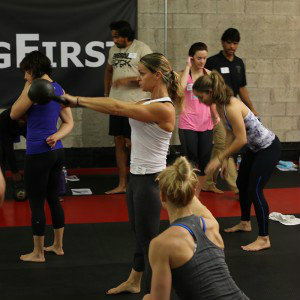
A Real-World Explanation of Work Capacity
The tag “work capacity” goes back to post-war Sweden. In 1947, Swedish clinical physiologist T. Sjöstrand evaluated the “physical work capacity” (PWC) of ore smelting workers. He measured the amount of physical work they could do on a bicycle ergometer at a heart rate of 170 in a period of several minutes.
As all tests, this one is biased. A bicycle racer would leave a blue-collar worker in the dust. Then the latter would invite the former to hang with him for a shift at the steel mill. We have our own test, the SFG five-minute snatch test, that can be praised and criticized in the same manner.
The problem is, PWC is not only skill dependent — racing a bicycle or snatching a kettlebell — it is also energy system specific. When we talk about energy systems, “capacity” has a very straightforward meaning — the size of one’s fuel tank. And alactic, glycolytic, and aerobic “tanks” are all filled and emptied differently. You cannot test all three with one test. To complicate the matters further, all three systems work at the same time, albeit changing the ratios of their contribution to the total energy needs. So the “capacity” tested by the five-minute snatch test is not the same as the one tested by the ten-minute test.
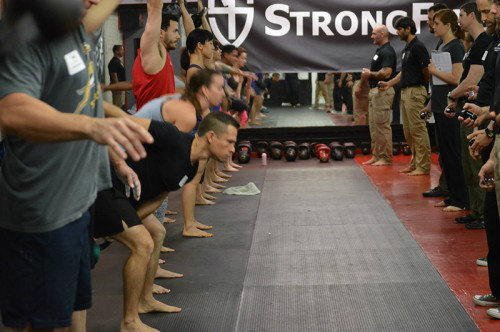
The bicycle racer in our above example — a real racer, not a “mamil ”— has a huge aerobic tank that enables him to sustain a moderate effort for a long time. The steel mill worker, on the other hand, has high alactic capacity — plus efficient aerobic recovery. In other words, he manhandles heavy objects without going into glycolytic burn, then quickly recovers. It is the only way. If the worker stayed totally aerobic, he would not have had the strength to pick up the heavy metal. If he went “WOD” glycolytic, he would have collapsed into a worthless pile of sweat just minutes into the hours-long shift.
So when you utter the words “work capacity,” be ready to qualify the dominant energy system: alactic, glycolytic, or aerobic. Or, alternatively, specify the physical load parameters: power, tempo, and duration. If you do not, you are just spewing meaningless jargon.
How to Properly Train Your Energy Systems
There are proven training protocols for training all three energy systems. For the aerobic one refer to the book Peter Park recommends, The Big Book of Endurance Training and Racing by Dr. Phil Maffetone.
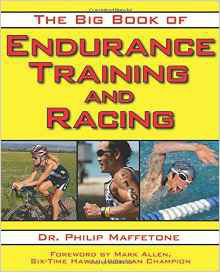 For glycolytic training stick to the guidelines outlined in the Long Rests blog: 20-50sec all-outbursts with super long rest periods and 1-5min 50% efforts. More about this in a near future.
For glycolytic training stick to the guidelines outlined in the Long Rests blog: 20-50sec all-outbursts with super long rest periods and 1-5min 50% efforts. More about this in a near future.
An example of alactic training plus aerobic recovery is a Russian weightlifter’s or powerlifter’s training. He will do many sets of low reps far from failure, with adequate recovery and no pump or burn. “Work capacity” is not his goal, but a nice side effect of his system of strength training. Did you know that Olympic weightlifting champions Plyukfelder and Rigert would put in a full shift of work down in a mine before heading to the gym?
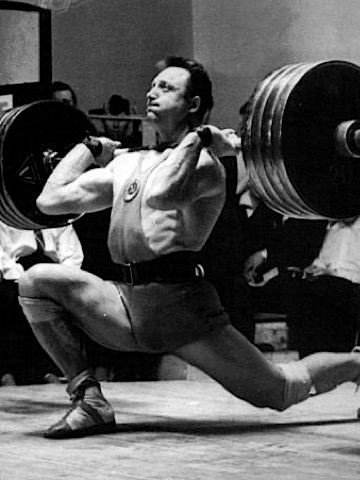
Maximov, Selouyanov & Tabakov (2011) explained:
“One can perform strength exercises not to failure. E.g., the athlete lifts a 16RM weight 4-8 times. In this case, local fatigue does not develop, there is no high acidification of muscles… A situation arises that stimulates the development of the mitochondrial network in glycolytic and intermediate muscle fibers. Therefore, a nearmaximal [70-90% intensity—P.T.] exercise with rest pauses develops the muscles aerobically.”
Gray Cook has pointed out that my ETK Rite of Passage military press plan is a work capacity protocol. Inspired by the Soviet weightlifting methodology, it has to be. Even though strength remains its number-one goal and alactic plus aerobic endurance is just a “WTHE.”

You Don’t Want Work Capacity — You Want General Endurance
You might ask, is there such a thing as “general work capacity” that covers all of the above? Yes, but it has a different name. The term accepted by Soviet sports scientists decades ago is “general endurance.”
In Russian sports science and coaching practice, every quality is subdivided into general and special. “General” refers to “…the ability… to perform any physical work more or less successfully.” (Ozolin, 2006) “Special” is the same thing as “sport-specific.”
“General endurance is the ability to perform for an extended period of time any work involving many muscle groups and placing high demands on the cardiovascular, respiratory, and central nervous systems.” (Ozolin, 2006)
The Takeaways on “Work Capacity”
- When you have the urge to say “work capacity,” wait till it passes — or be ready to specify the dominant energy system or the power, tempo, and duration of the exercise.
- If you are unwilling or unable to specify or have something broader in mind, say “general endurance.”
Next article, you will learn that the Russian meaning of the words “work capacity” is altogether different.
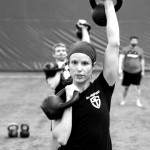
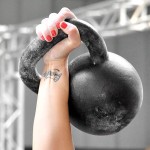



Hi Pavel, Andy in Norway here! Ex Aussie!
It is so good to see individuals interested in your article!
To anyone reading this article listening to Pavel will be the best thing you can do! Having trained an endurance half marathon runner to some wins, I now find myself training an Olympic class javelin thrower! Oh how I love the challenges!
Nice article
Pavel (or Al),
May I ask a simple question – what energy system does just holding serious tension use? No movement, but just staying tight. Make it a 90%+ max say tension (any form of holding involves some tension I know).
And would that (ie. the energy system usage) change the longer the tension is held?
I guess a further question is can tension be considered in the capacity discussion – like a tension holding capacity. If that is a useful/meaningful concept?
Matt,
Muscle under tension follows the same energy system rules whether it is generating actual movement or not. The amount of energy required would change, but not system contribution. Any intensity of work over the current state of the aerobic system will require some amount of anaerobic fueling.
Thanks Al – I will have to research energy systems to understand the complexities of this.
I’ve been looking forward to this article and it was worth the wait. I am equally excited about the rest of the series. Question: What kind of work capacity is built in the ‘Russian Bear’ protocol from PTTP?
Zach, mostly glycolytic capacity.
Can’t wait to read the next article regarding this.
Sir Pavel, I believe your dad was a judoka before? How do you think a typical judo training would be classified? Lately I have been doing fast and loose drills in between set of drills in the dojo and it helps. Just want to know some tips on how to recover during a session better. Thanks.
Zaldy, yes, judo is among the sports my dad used to practice.
Traditionally, judo is very glycolytic with an aerobic component. But the Russian team went alactic + aerobic with great success. More about it in the future.
I suspect that’s the reason why Eastern Europeans are doing very well in international competitions, and not because they have more burly, powerful physiques than most Asian competitors like most people think. I just wish our club would go the A+A route from time to time.
Where does the tabada protocol fit into this discussion?
Jason, glycolytic power and capacity primarily.
Really enjoying the series of articles. I feel like some profound truth is being revealed.
Thanks, Karl!
Ray,
Consider your snatch test model. In the first 20 seconds the speed at which the bell is traveling it’s fixed distance will be higher because the energy system is more efficient , namely the alactic system. So, your calculation of power will be the sum total of each rep. Rep one travels at the distance in a faster amount of time. Power equals force times distance divided by time. The shorter amount of time of the first rap will increase the overall power. If you can train the alactic energy system to last longer then your power will increase as well. Hence the practical application of bioenergetics in consideration of work capacity.
Ken,
You’re correct, but either way, if you bang out of the gate too hard, you won’t last. The higher your aerobic capacity, the better you can buffer acid resulting from anaerobic glycolysis, which you will need to complete the 5 min event at a competitive level. From what I understand, the oxidative system will just not keep up with the workload in that time not matter how developed it is (or can it?). But the buffering while going glycolytic is key.
Interesting discussion… can you email me, Ken? berto.ciampa@gmail.com
You can extend the capacity of the alactic system, but not by much. Creatine supplementation does exactly that. I showed that very fact in the lab myself in the mid 90s. In the case of a 5 min snatch test though, that might get you one extra rep or two at most. The alactic capacity is easily demonstrated with sprinters. If you have a sprinter go all out, they will take a short time to get up to speed, will maintain speed, then eventually slow down. Most people will slow down within 10 seconds. Some conditioning can extend that a bit. The conditioning is increasing the capacity of the phosphagen system (alactic). When the alactic system stores are burned down, you have to shift to the anaerobic glycolytic system, which cannot produce as high a work rate. That is why you slow down after 10 seconds or so. In a 5 min snatch test, you are using all 3 energy systems, alactic, anaerobic glycolytic, and aerobic.
I’m not entirely sure why these posts aren’t being listed in order.
Ken, you need to click, “reply” under the comment itself to answer someone ;]
Al,
Thanks for the tip, I think I was unconsciously and randomly picking either the bottom or the reply tab indiscriminately. Now I will know to be more mindful. My computer skills are often very questionable.
ken
Or, to be more relevant to the bioenergetics of the human body, your fuel was switch somehow to an inferior grade or quality of fuel en route.
Ken, glycolysis is not inferior—but it is an emergency fuel. If one had to take a hit of Red Bull every time he got up from the couch, he would have problems…
Yes, not inferior for its use as an emergency energy source. But inferior in its use by many as the go to energy source, correct.
?, that last entry was meant to be a question. I really would like to develop a deeper understanding of these physiological processes.
I disagree. I believe work capacity to be better defined as average power output using the formula force x distance = power. Adding it energy pathways really just over complicates it and simply indicates what fuel source is being used to perform the work and now how much work is actually being accomplished. For example if we use the 5 min KB snatch test that is referenced and an average man of 5’9 is performing the test with a 53# kettle bell. For the sake of this argument we will only measure the work done to get the bell over head and not the portion in which it is lowered and rest. The man must apply 53# of force and move the KB a distance of approximately 5ft from in-between his legs to locked out overhead and lets say he does 1 rep every 2 seconds for a total of 30 reps a minute. The man is performing 53# x 5 ft= 265 ft/lbs of work every 2 seconds and multiple that by 30 reps a minute = 7,950 ft/lbs of power output a minute for reference 1 horsepower is equal to 33,000 ft/lbs per minute. Trying to add energy pathways into the mix simply explains what fuel source you are burning to perform the work and has very little bearing on how much work is actually being done.
Talking about the energy pathways in reference to work capacity has more to do with your training goals . If you’re training the alactic pathway your work capacity will be greater because the power output is faster albeit or a short total duration, and as time goes on the power output slows down. Dealing with the energy pathway, or bioenergetics, helps you in practical terms rather than in strict definition. One must also consider the role of fatigue, as fatigue sets in power, or work capacity will decrease. This is due to hydrogen ion build up. If one is knowledgeable of bioenergetics one can manipulate and decrease hydrogen ion buildup, therefore increasing work possibly. This is a classic dispute between in vitro and in vivo definition.
Think of it like this. If you’re trying to get the maximum horsepower out of your vehicle, you would be very upset if your fuel line became obstructed decreasing the energy output.
Ray,
F X D = work; F X D / t = power. This is not in debate. How this is fueled is, like Ken pointed out.
To snatch a 53# bell overhead requires a heck of a lot more than 53# of force. Acceleration is different from velocity.
If I am running mostly on sugar to fuel my performance, and I can complete 100 reps in the 5min snatch test, we have a baseline. If I go and develop my aerobic system for a few months, and succeed in completing 125 reps in my next snatch test, how is the fueling behind the work not relevant and, in your words, “have little bearing on how much work is actually being done”?
I’m not trying to be argumentative, Ray… these are the types of ideas that have most folks training at high intensity, never seeing their performance potential, and likely, affording ill-health later in life.
Ray, in the article I gave the option to use physical parameters to measure “work capacity”. This is fine but only marginally helpful to you in reaching your goals or communicating with others.
im joining the royal marines and want to ace my fittness tests its starts with
group 1.5 mile run in 12.30 followed by a solo 1.5 mile best effort after a 1 min rest max score 8.15 min later in the day is the shuttle run level 13 is max score imediatly followed by
press ups 60 max score
sit ups 85 max score
pull ups 18 max score
points are deducted with poor form
current fittness
i dont know my 1.5 time but i have built a solid aerobic foundation running 1 hour 15 mins is very easy for me now i recover imediatly
i do swings with 32kg and tgu 24kg via SnS
press ups and sit ups high 60’s
pull ups 12
don’t know my shuttle run level
im most worried about the 1.5 mile
any help would be really appreciated i have alote of respect for your work
Andrew, look up Al Ciampa’s articles and several excellent threads on our forum.
It should be stated that increasing the mitochondrial of the type II muscle fibers is just as revolutionary. Another protocol that Pavel has introduced to us from recent Russian exercise physiology.
Regarding training all three energy systems:
This is to the best of my knowledge, if anyone finds problems in my thinking please feel free to speak up.
There are two variables to consider in aerobic fitness. Lactate threshold, and VO2 Max. Although VO2 max can be raised minimally, lactate threshold has a much greater range of improvement possible. Lactate threshold can be improved by training anyone of the three energy systems. Although strength training will improve lactate threshold, aerobic training geared towards VO2 Max will not provide significant strength increases. This is why Pavel’s introduction of recent Russian exercise physiology on improving the slow twitch fibers of the muscles is so revolutionary. By occluding bloodflow, the muscles are pushed much deeper into glycolysis then would be achieved in more conventional aerobic training.
Ken
Ken,
What I am learning is that VO2max is your “potential” for aerobic work, not a test of your actual ability. Lactate threshold is something else altogether, and you’re correct that it is trainable. All three types of system training will improve your LT but only one will maximize your performance, which is the preferred outcome, I assume.
That you can build a huge glycolytic “motor”, and increase your performance is well known. That you reduce aerobic capacity while doing so is not. The area under the aerobic curve on a graph, of a glycolytic beast is very low; while the area under the anaerobic curve is high, very near to overall performance.
If you increase the aerobic curve closer to the overalll performance curve, both will increase… above and beyond what anaerobic metabolism, and therefore overall performance through anaerobic metabolism, was even capable of.
“Although strength training will improve lactate threshold, aerobic training geared towards VO2 Max will not provide significant strength increases.” … you’re confounding systems training with structural training, a myth perpetuated by the field.
Al,
I would love to read up more on all of the’s, do you have any suggestions on quality literature. Something that goes into considerable depth on the physiology…
Ken
What I mean is, a hardcopy go to reference. For instance, an exercise physiology textbook that you consider to be worth the price. I really do want to go to an exhaustive, no pun intended, depth of physiology and exercise. I will always consider the text associated with this website to be a very worthwhile thing. I have been reading Pavel for a very long time, and have considered him to be among the best of the best.
ken
Ken, currently many specialists see VO2 max as “not informative” when it comes to aerobic endurance development.
Sure, you can up the lactate threshold by developing your buffering systems but there is plenty of research (in Russian) and experience on Russian national teams in many sports that a superiors endurance training is “anti-glycolytic”.
Thanks Pavel for another great and insightful article.
I had a question which Erik already asked.
Another is if we can usually get better at improving ‘one system at a time’, is there transferability in these? and what are the benefits or how to priortise them?
To make my question more sensible, is it better for a generalist to just focus more on 400/800 m sprints (more often) and leave the long(ish) runs to train seldom to have the best bang for buck?
Eagerly waiting for the Part2 article.
CJ,
I’m curious what Pavel will say, but it seems to be the opposite. 400/800m for most users, is ~1-3min at high intensity. No bueno, except for very short dosing to peak.
CJ, in the classic Russian model you develop the systems in this order over a period of months: aerobic, glycolytic, alactic. In a week you do the opposite. Today this model is questioned.
The question of transfer is a tricky one. Rather, you could say that a particular protocol focuses on one system and gives attention to another. The reasons for developing all systems even for specialist athletes more have to do in how systems “support” each other. E.g. in the 800m events you mention, glycolysis is the predominant system. But if your alactic system has high power and capacity and aerobic system high power, you will also get more out of glycolysis.
CJ, and no, for a generalist focusing on 400 and 800m is a road to burnout.
S&S swings plus hikes in the mountains would be a healthier option.
Thanks Pavel for your input. Highly value your response.
I have, in the last 6 months or so, started to shy away from flat out 500m rows etc on a weekly or fortnighlty basis which were a regular at my gym.
Why, I wonder, are they termed as ‘ test of fitness’ then?
My body tells me and gives me the feedback that swings (S&S) & a walk with my 15Kg toddler in a backpack on my back, are better for my body.
Erik,
I suppose it depends on your “recoverability”, but I have found the Roman proverb: “the man who chases two rabbits catches none” to be overwhelmingly true. I have attempted to develop multiple “domains” concurrently with myself and a number of my overly-zealous students. What I have found is that it only works in those that are quite deconditioned.
I have found the guidelines of “training residual effect” durations to help guide my programming while I’m prepping for endurance events.
just a thought.
Nice Mark. And I think one thing that we will discover through testing is that you can build strength and conditoning together, beyond the novice level, once you develop aerobic capacity and get off of relying on too much glucose for fueling.
So a weightlifter or a sprinter should generally just
Focus on 80-90% work for 3-5 reps and 8-10 sets for the bulk
Of his sessions. With long rest (3-5min) in between sets.
Jordan, this is too much of a generalization for weightlifter and usually too much volume for a sprinter.
Thank you for your response Pavel. I look forward to the rest of your work on the subject.
I’m very fascinated by the subject especially in regards to the power athlete i.e. weightlifters and sprinters.
A couple of questions:
I love how you take these fitness jargons like “work capacity” and simplify them into something everyone can understand. A few questions tho:
Can you train the three energy system in one program (ex. alactic on monday, glycolitic on thursday and aerobic on saturday) or is it better to focus on one energy system for a period of time like 4 to 8 weeks before shifting focus on other energy system?
Is it possible to maintain my glycolitic and alactic upper body endurance by using your Easy Strength program of deadlifts, press, swings and pull ups while doing specific training for a marathon running 3-5 times a week focusing mainly on aerobic endurance with long easy runs?
Erik,
You can’t maximize each pathway in one program, but you can train them all. That said, glycolytic training and aerobic training are a odds… the acids resulting from heavy glycolytic training reduce enzymatic function that is required for oxidative phosphorylation, at the least; and, as Pavel learned, destroy mitochondria, at the worst.
Your second question is just not how it works. While individual muscle fibers have their own tendencies, cellular fueling is mostly a systemic affair.
Erik, Al answered your question; what are you trying to achieve?
My experience is I lose some of my strength on my key lifts like the single arm press when I focus too much on training for a marathon.
I’m not an elite long distance runner and my goal is to improve my aerobic endurance for a marathon and longer distances while maintaining my current strength, muscle mass as well as the glycolictic and alactic systems for my other obsession which is obstacle racing where participants do all sorts of stuff that also require strength like chopping wood, rope climbs and sand bag carry.
Right now my training consist of a period of GTG and Easy Strength while running 3x a week. Any suggestions on how to develop strength and aerobic endurance all together?
Very well said Pavel. I was getting worried the words work capacity were headed down the same path as “core training” and “functional training.” Hopefully you can pull it from the abyss!
Thanks, Travis!